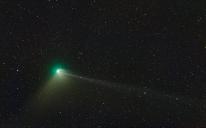Howdy, Stranger!
It looks like you're new here. If you want to get involved, click one of these buttons!
In this Discussion
Comets - a simplified process?
Hi Adam,
First discussion started here although a member of the site for about 18 months. Your videos have been instrumental in helping me understand astrophotography generally and PI in particular. Thank you and please keep up your excellent work.
I've watched quite a number (although not every minute) of your videos on comet processing over the last couple of months. I've poured over the flow charts and experimented with settings. At the end of it, I wanted to ask for your view regarding a workflow that I've developed that has worked for me. In this case, it is an OSC process since that's what I chose to shoot the comet with and I tracked the stars at the sidereal rate. At a high level, it goes as follows:
1) Process images using WBPP using my 'usual' settings for a deep sky object with the exception that I deselect Local Normalization (a PI team recommendation), and in Image Integration I affirmatively select Generalized Extreme Studentized Deviate and Large-scale pixel rejection high values of Large-scale layers: 6 and Large-scale growth:20. This creates a stars aligned image, usually with some comet residuals. I don't care about those residuals since the stars are all I really care about in this image.
2) Opening that master star aligned image created with WBPP, I use StarXTerminator to create a stars only image (I select the Unscreen Stars option). Because of the way Comet Alignment works, I also save this stars only image to disk (I put it in my Masters folder so I don't lose track).
3) Using the Comet Alignment process, I load the registered images created by WBPP in step 1 (these are the star aligned images). I select a reference frame so the comet appears where I want it in the final image. I set the Operand Image to be the stars only image I saved to disk in step 2 and also select Stars Aligned as the Operand type. Also follow all the other steps to achieve comet alignment (output settings, parameters, etc - all covered by you in your tutorials).
4) Using Image Integration and applying it to the comet aligned images created in step 3, I get a comet only image. This image often has some residuals which I clean up with the Clone Stamp although I'm sure other techniques work as well.
5) Using Pixel Math I add back the stars from step 2 to the cleaned up comet only image from step 4 using ~((~Starless)*(~Stars)) and applying that to the comet only image.
6) Apply SPCC and other image enhancement/processing steps in the linear phase and, after Histogram Transformation, other processes in the non-linear phase. Also, this whole process can obviously accommodate drizzling as would be appropriate for an OSC image and SPCC.
I've attached an image from January 29 that I processed in this manner. I've been experimenting with all this in order to simplify things and to avoid the additional steps to "fool" PI in order to get an image that I find acceptable. I know this is a bit of a departure from your preferred process and, since I'm usually interested in optimizing my images, I wanted to see where I can improve things.
Thanks in advance to you and others here in the discussion.
Fred


2023 01 29 C 2022 E3.jpg
2048 x 1275 - 3M

Comments